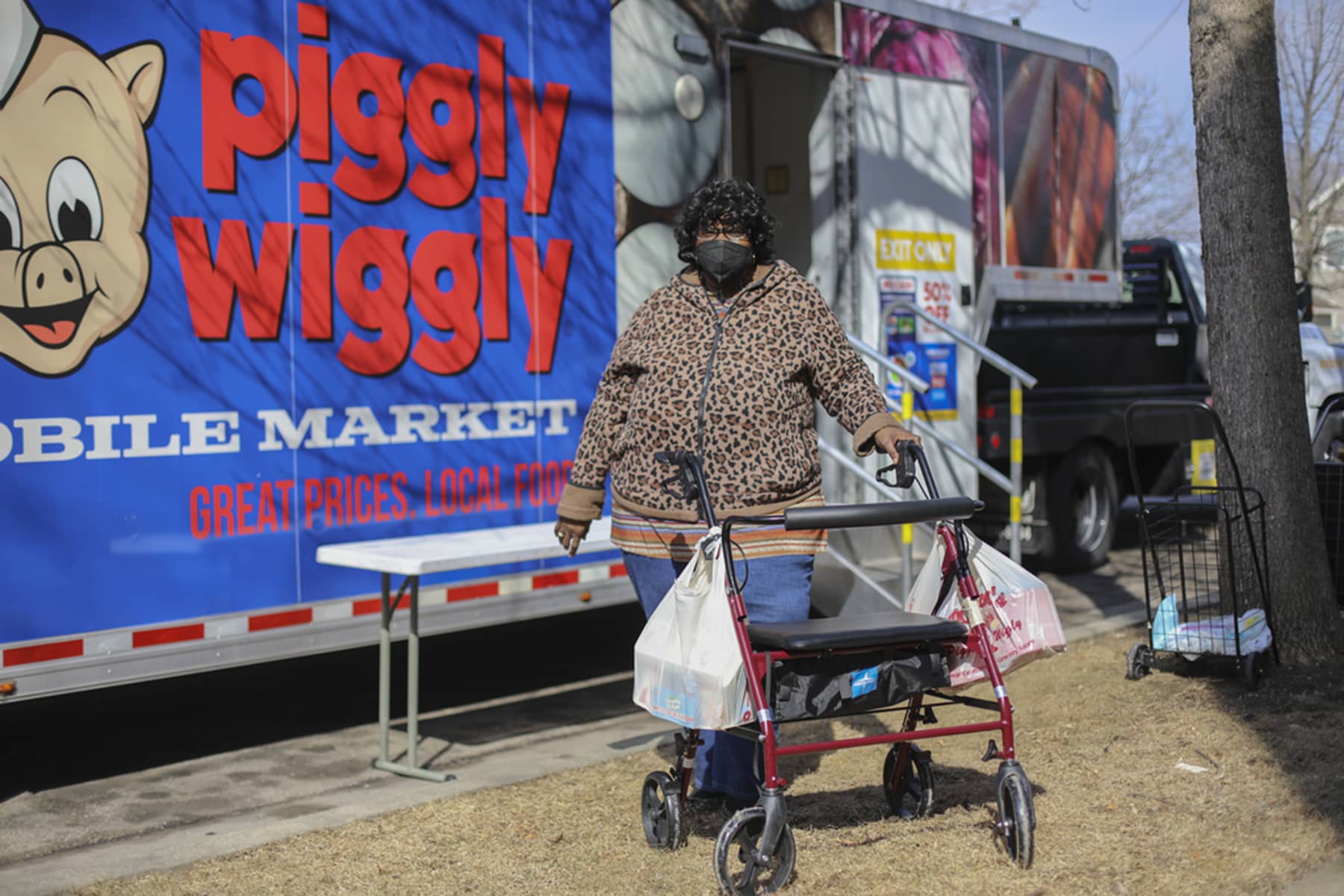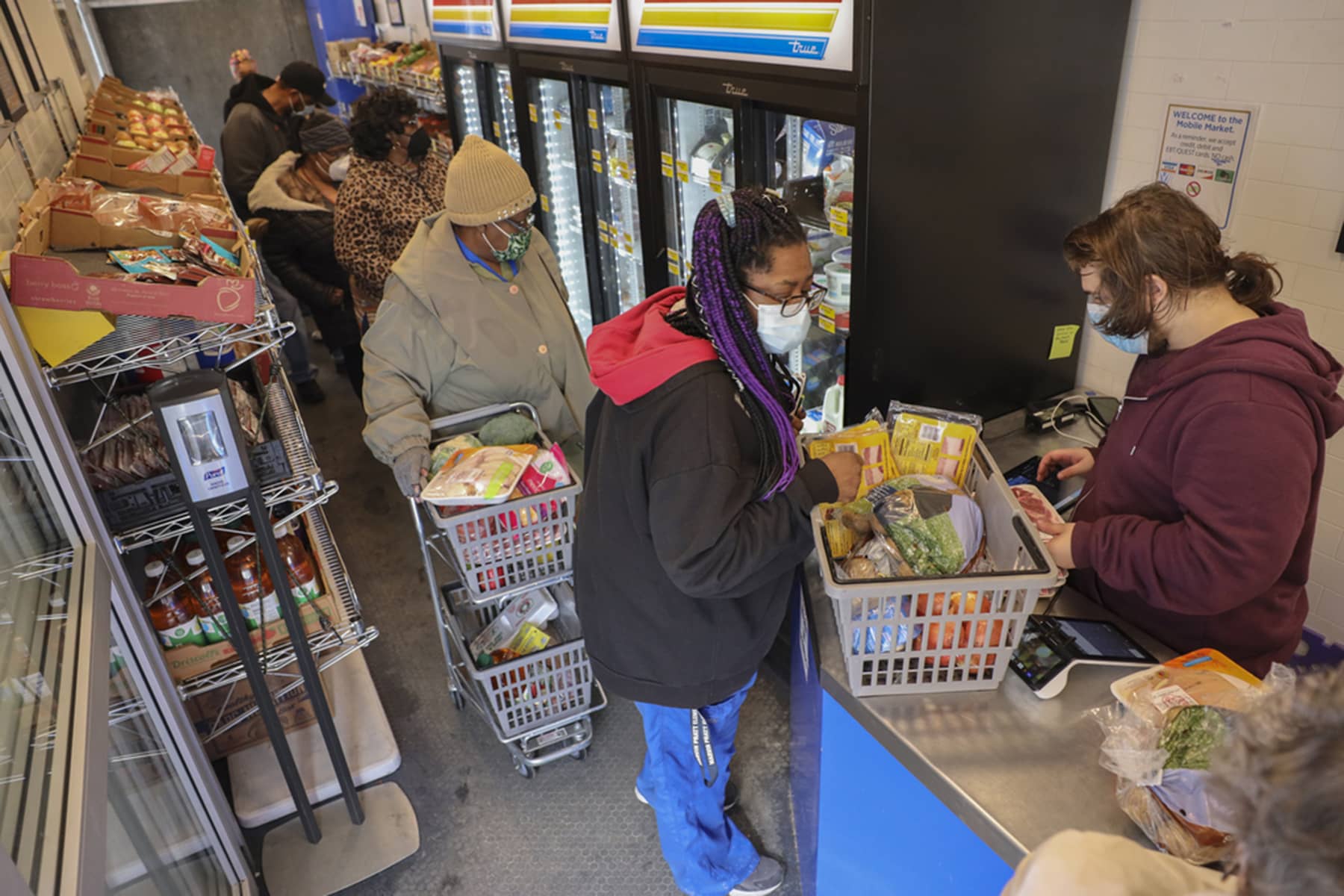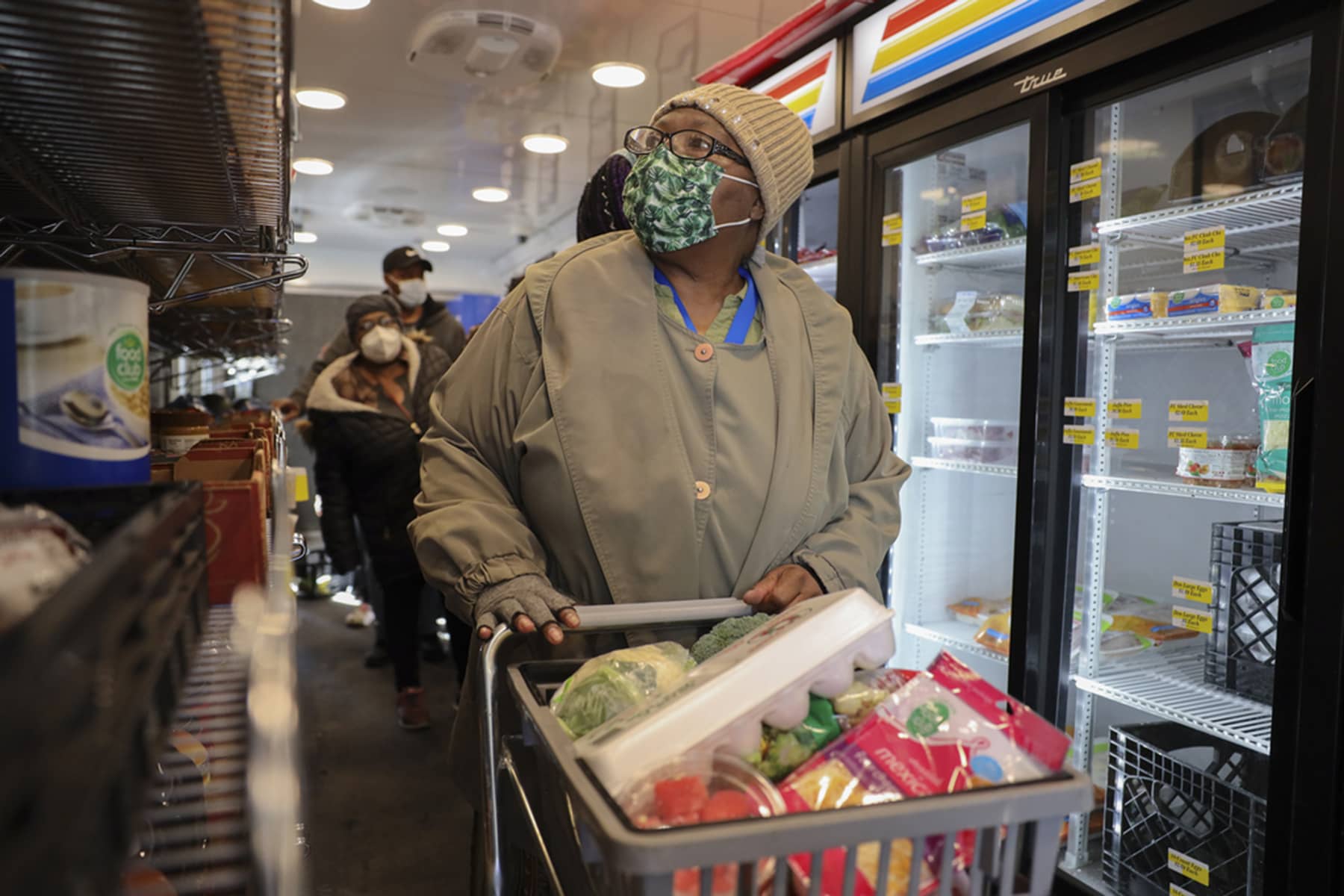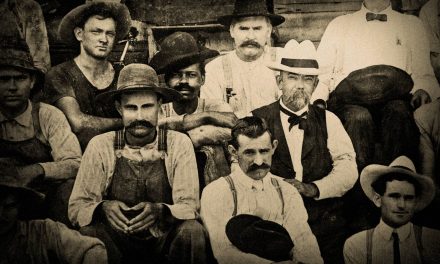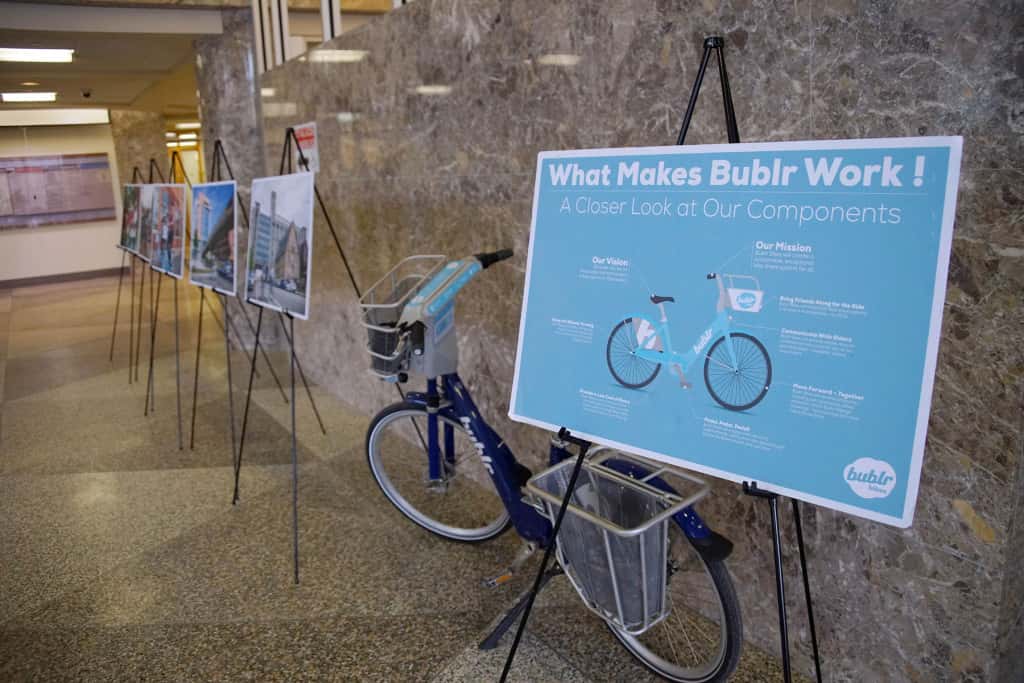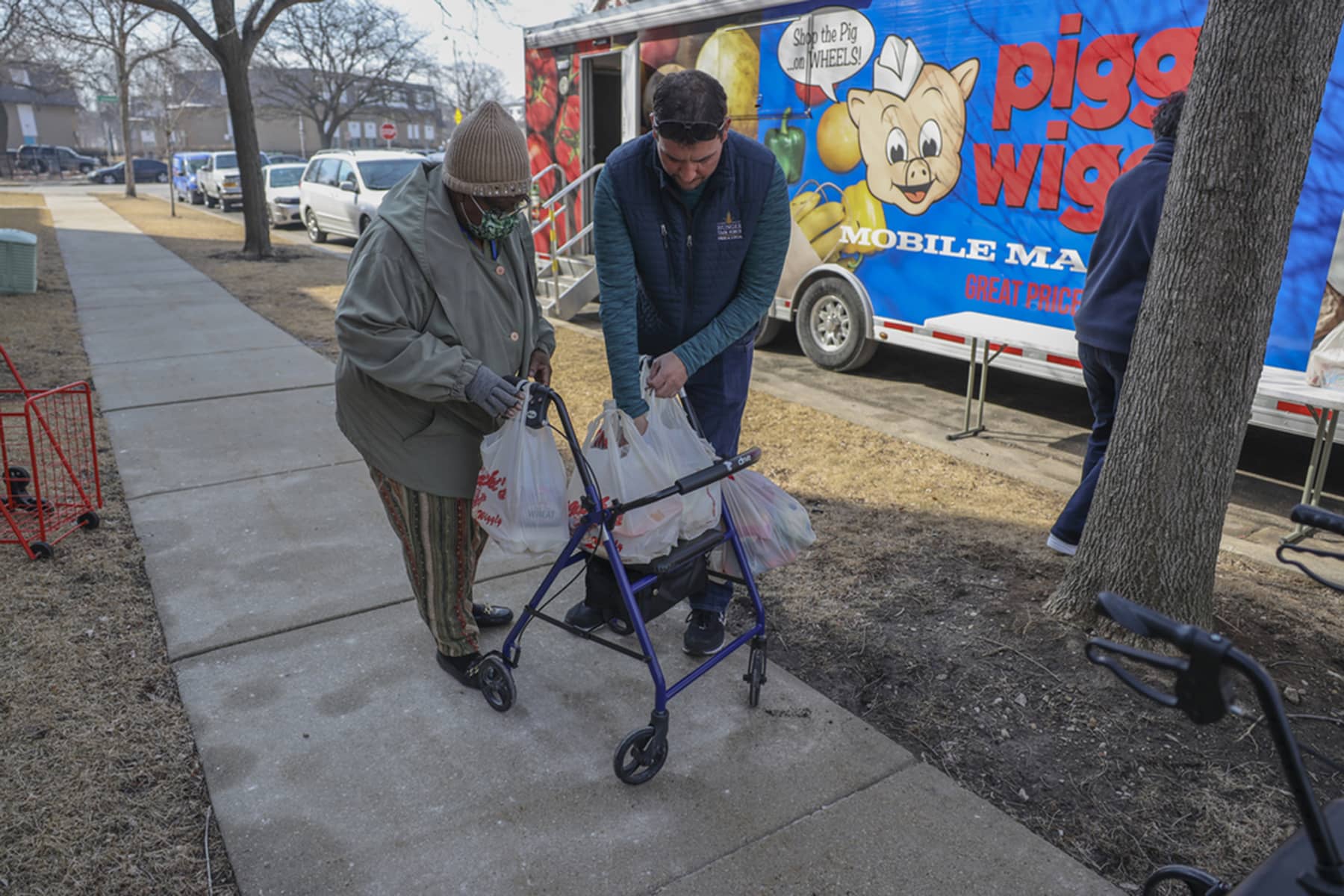
For Shirley Johnson, getting groceries is not easy. Johnson, a 64-year-old retiree who lives alone in Milwaukee, does not own a vehicle and has to rely on others to get food. She often calls her daughter or other family members who live in the city, hoping to catch a ride to the grocery store.
But if they are tied up or busy, Johnson has to pay someone to take her shopping — except when the store comes to her.
Once a month, Johnson waits for a long, colorful semi-trailer hitched to a truck to pull up at the Highland Gardens apartments. The narrow aisles of the Piggly Wiggly on wheels are filled with fruits, vegetables, meats and dairy products.
“We appreciate that truck because a lot of us can’t get to the store,” said Johnson, who buys staples and specialty items including Lactaid for her lactose intolerance.
Thanks to a federal grant, the groceries are sold at half price. Johnson, like some others who shop at the mobile market, receives FoodShare and struggles to afford certain foods at regular stores.
Some nonprofits are turning to these mobile markets as an alternative to brick-and-mortar stores to reach food-insecure populations.
A majority of Milwaukee residents are considered to have low access to grocery stores, which is further complicated by a transportation barrier — 13.4% of Milwaukee households do not have vehicles, according to census data.
But mobile markets can struggle to stay financially afloat. One researcher who has studied mobile markets for over a decade likens them to “revolving doors” because of how frequently mobile market projects start up and then stall.
“There’s often funding to start them,” said Lydia Zepeda, a University of Wisconsin-Madison professor. “The question is trying to find a model that is financially sustainable — because they’re expensive.”
‘Thinking outside the box’
The Hunger Task Force, a nonprofit based in Milwaukee, has partnered with Piggly Wiggly to offer mobile grocery stores.
“You really have to be creative if you’re going to solve problems like food insecurity,” said Sherrie Tussler, the executive director of the Hunger Task Force.
She added: “Just doing everything the same way all the time isn’t the answer, but thinking outside the box about what already works.”
All mobile market groceries are sold at half price thanks to a U.S. Department of Agriculture grant. Cash is not allowed, but debit, credit and cards for the state’s food assistance program, FoodShare, are accepted.
The mobile market stops at community centers, senior living facilities, public housing complexes and schools in identified food deserts across the metro region, from Brown Deer to Franklin. On average, about 25 to 35 people utilize the market at each stop, Tussler said.
According to data from 2019 collected from one mobile market stop, 88% of purchases at the market directly benefited children. Seniors benefit as well.
“A lot of these senior apartment buildings are in food deserts,” said Rick Lewandowski, the senior services director for Hunger Task Force. “We know it’s hard for seniors to get to grocery stores, so they have to pay someone to get there, and they’re already on a limited budget.”
‘Piggly Wiggly comes to me’
The market does not carry any processed or canned foods. Tussler said this incentivizes people to eat healthy when oftentimes they cannot afford to do so.
“They use their limited FoodShare resources to go on board (the mobile market) and get all the fresh foods that create meals rather than stuff to eat,” Tussler said.
Johnson said the strategy works, helping customers with high blood pressure and diabetes make healthier choices.
“They’ve got good quality stuff,” Johnson said. “And, you know, this is much easier for me, so I won’t have to go to the store because they come to me. Yeah, Piggly Wiggly comes to me.”
Cornelius Sawyer, the president of Highland Garden, said in addition to the mobile market, residents over 60 can pick up a “Stockbox,” filled with healthy foods including rice, pasta and vegetables that the Hunger Task Force delivers to low-income seniors for free.
Between the Stockboxes and the other items available at the mobile market, 68-year-old shopper Lois Brown said the services are “a blessing all the way around” for residents of Highland Garden Apartments, especially those who are homebound.
“I mostly come out every month,” Brown said. “Rain, winter, shine or snow.”
Breaking even
But bringing groceries to shoppers comes at a steep cost.
Non-profit mobile markets require outside funding from sponsors or grants — which can be short lived, impacting the sustainability of operations. Food is also frequently sold at reduced prices, ultimately hurting the mobile markets’ bottom line, according to Zepeda’s 2016 study. And even when food is sold at retail price, that often does not cover the expenses, Zepeda said.
“Overall, if I had to put a pen and paper to it, it pretty much breaks even, if not even a little negative,” said Ralph Malicki, owner of Malicki’s Piggly Wiggly in Racine, which partners with the Hunger Task Force to run the mobile market.
Zepeda estimates the vehicle alone costs roughly $150,000. Even a cheaper used vehicle often requires modifications ranging from $50,000 to $75,000, she said. The Hunger Task Force also has to hire a Class A semi-truck driver to operate the vehicle, which adds quite heavily to the cost, according to Lewandowski.
“(Mobile markets) have their place, but they serve not a lot of people,” Zepeda said. “If you’re trying to solve hunger, mobile markets are not the answer. They are a solution, but they’re not the solution.”
Malicki knows that from first-hand experience. The mobile market he operated in the Kenosha and Racine areas failed because, “We couldn’t get enough traffic to the trailers. We couldn’t get enough consumer support to make it work.”
Expansion in works?
A few valuable lessons have come out of the Hunger Task Force’s mobile market. According to a Milwaukee Fresh Food Access report, data gathered from the mobile markets could be used to determine potential locations for grocery stores. For example, Tussler said when the mobile market was stationed for two weeks outside St. Joseph’s Hospital in Milwaukee, it showed there were not enough customers to support a grocery store in that food desert.
Tussler said the Hunger Task Force is working with small brick-and-mortar chains to offer the same 50% deals provided at the mobile markets to incentivize produce purchases. So far, the nonprofit has partnered with the Chequamegon Food Co-Op in Ashland and the Outpost Natural Food Cooperative in Milwaukee to offer the half-off produce discounts.
Malicki and Tussler say they are committed to continuing the mobile markets in Milwaukee, which have been going strong for five years. And relaunching a trailer in Kenosha and Racine is not out of the picture, Malicki said.
“If we can make this successful here, it might be a model nationwide that could be utilized in different food deserts in various areas where there’s not a lot of appetite to build up a brick-and-mortar location,” Malicki said. “To be part of something like that is incredible. If we can set the pace where it can be duplicated in other areas of the country, that’d be great.”
While mobile markets are not a perfect or permanent fix for food deserts, Johnson has no complaints — and two suggestions. She would like to see a wider variety of foods, and “We just wish they’d come twice a month.”
Lauryn Azu and Joe States, with Erin Gretzinger
Coburn Dukehart
Originally published by wisconsinwatch.org
The nonprofit Wisconsin Center for Investigative Journalism collaborates with Wisconsin Public Radio, Wisconsin Public Television, other news media and the UW-Madison School of Journalism and Mass Communication. All works created, published, posted or disseminated by the Center do not necessarily reflect the views or opinions of UW-Madison or any of its affiliates.

